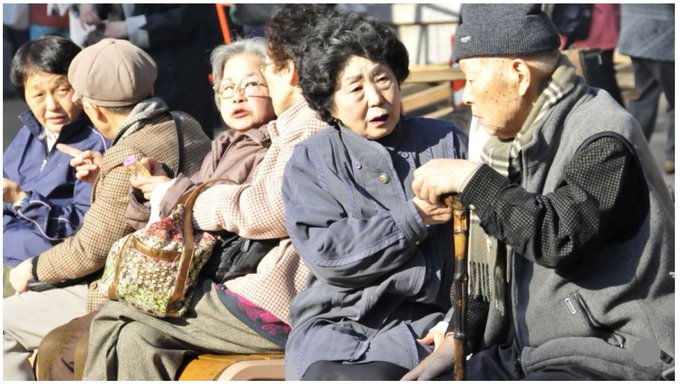How do you stop your country’s population shrinking?
While some obvious suggestions may spring to mind, coming up with policy responses is not often simple. Nowhere is this felt more acutely than in Japan, where the population declined by more than a quarter of a million last year.
That’s the equivalent of three times the amount of people it takes to fill London’s Wembley Stadium in just 52 weeks, and it’s showing no signs of slowing. The total population was 126 million in the year to October 2018, a fall of 0.2% compared with a year earlier, and the eighth consecutive drop.
Japan’s demographic challenges are well documents. As well as having one of the fastest-shrinking populations in the world, ageing is a key issue. Taken together, these problems underscore the challenges facing the country’s government and raise questions about the policies that might help, including loosening immigration rules and improving labour-force participation.
While Japan’s prime minister Shinzō Abe has already undertaken some reforms, bodies including the OECD say more are needed.

While ageing is acutely felt now in Japan, it is set to become a challenge for all countries, both in terms of managing an older population and financing healthcare for them. A World Economic Forum White Paper explored how it can be an opportunity, if the right policies are in place to retain experienced workers. It highlighted companies that are already embracing older workforces and said lifelong learning and healthy ageing policies will be key.
The number of Japanese people fell by more than 430,000, the Ministry of Internal Affairs data shows, a drop of 0.4%, while the number of foreign nationals grew 8%. The population decreased in 40 of the nation’s 47 prefectures, and dropped by more than 1% in the northern areas of Akita, Aomori and Iwate.
Boosting migration could help alleviate some of the tensions – in 2015, Japan’s migration rate was about 0.5 per thousand, compared with more than 5 per thousand in Australia and Canada, according to the International Monetary Fund.

People aged 65 or older made up 28% of the overall population, a record high, and one fifth are aged 70 or older. There was also a sharp drop in the working-age population – those aged 15 to 64 – underscoring how labour shortages are likely to continue to trouble Japan.

The Organisation for Economic Co-operation predicts 79 of every 100 people will be aged 65 or over by 2050.View image on Twitter

In its most recent survey of the country, the OECD says more reforms are needed to meet the changing landscape. It recommends a shift to more flexible employment and wage systems that are based on performance rather than seniority. It also says the nation should abolish the mandatory retirement at age of 60 years and work harder to increase women’s access to childcare, to allow them to play a greater role in the workforce.

“Japan needs to shift to more flexible employment and wage systems based on performance rather than age to enable it to better utilise its human capital, including older persons,” says OECD Secretary-General Angel Gurria.
“While female employment has increased significantly due to labour shortages, women are still under-represented in leadership positions. Promoting work-life balance and flexibility, as well as measures to stamp out discrimination, would lead to greater roles for women.”










